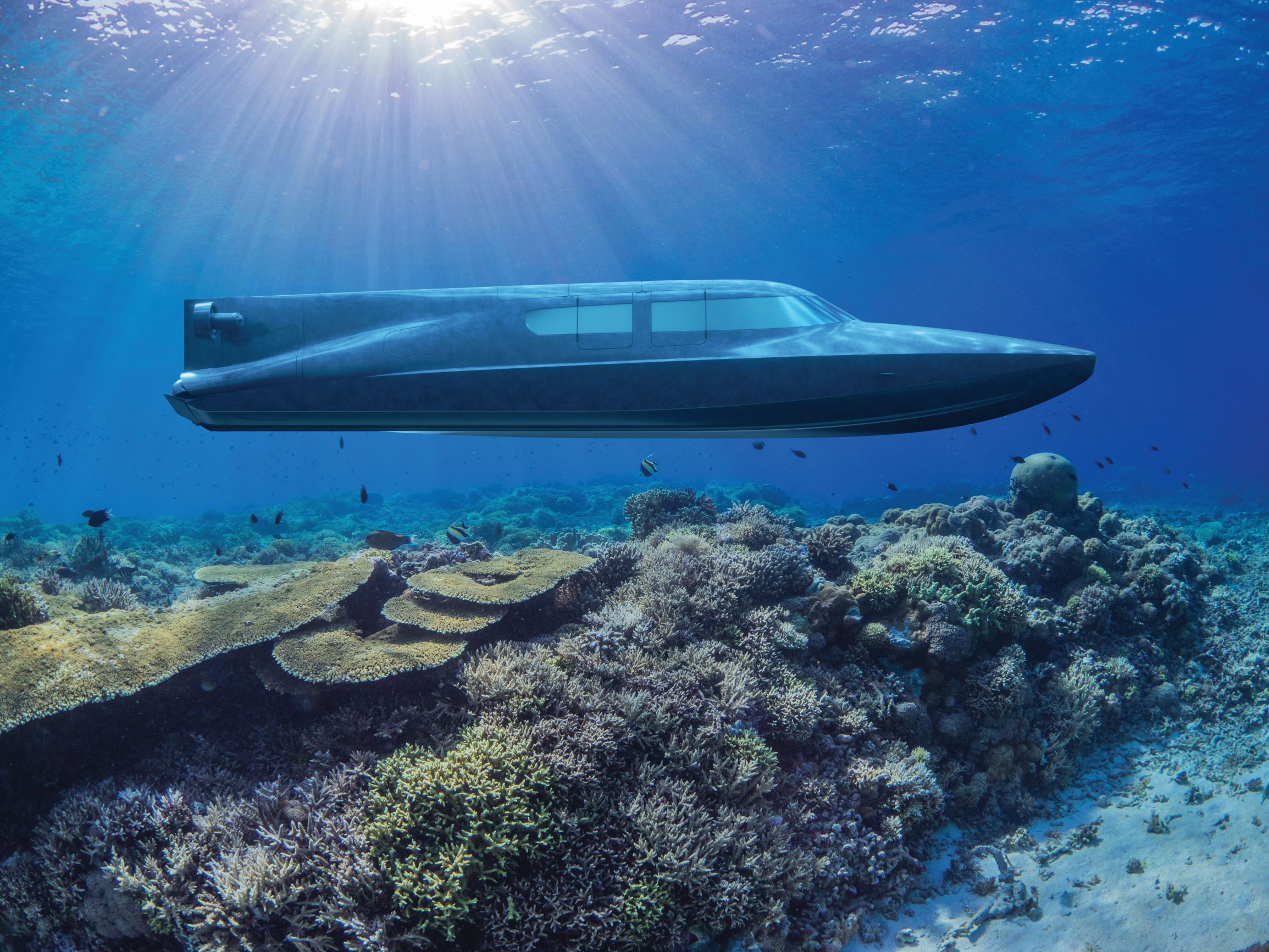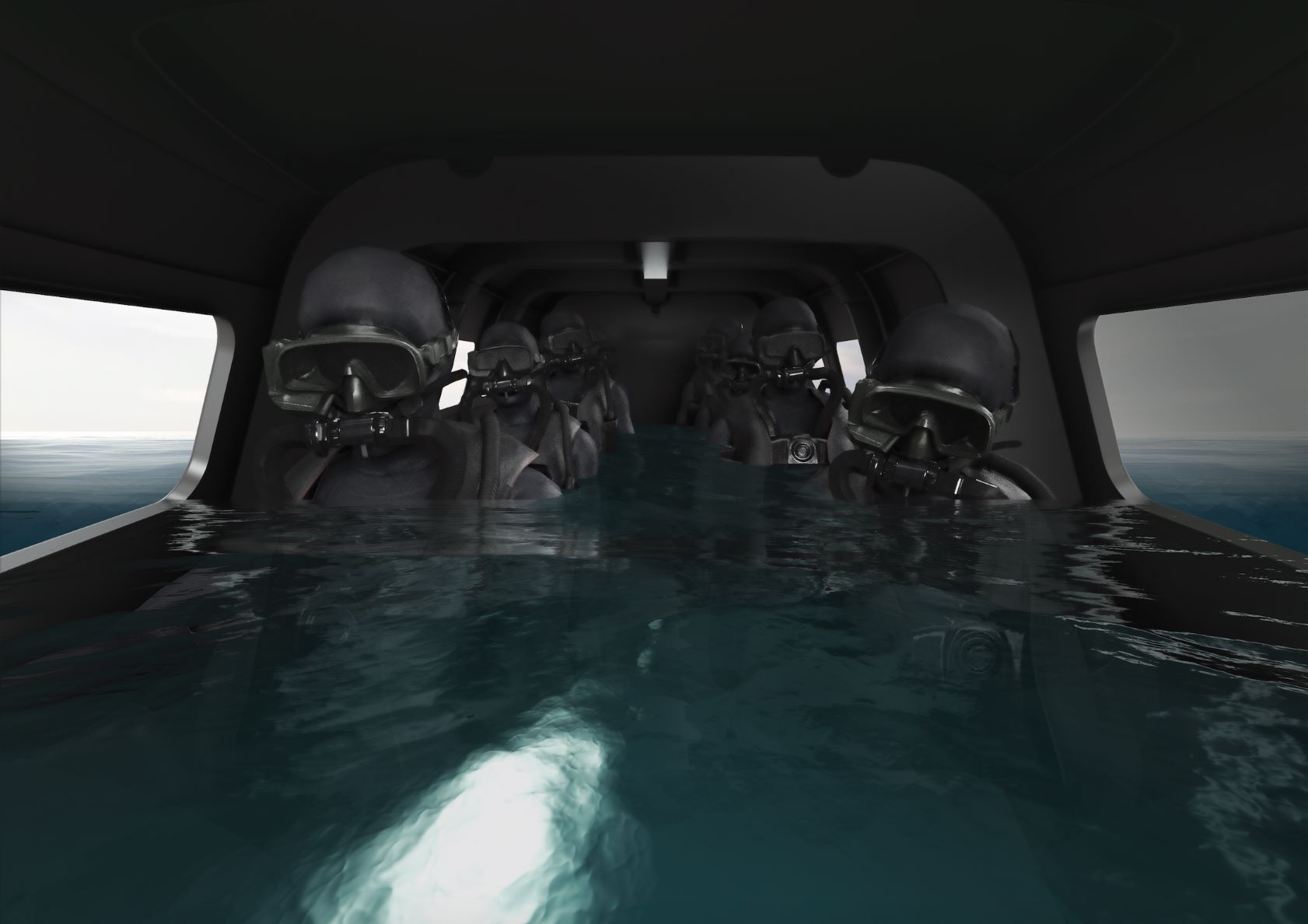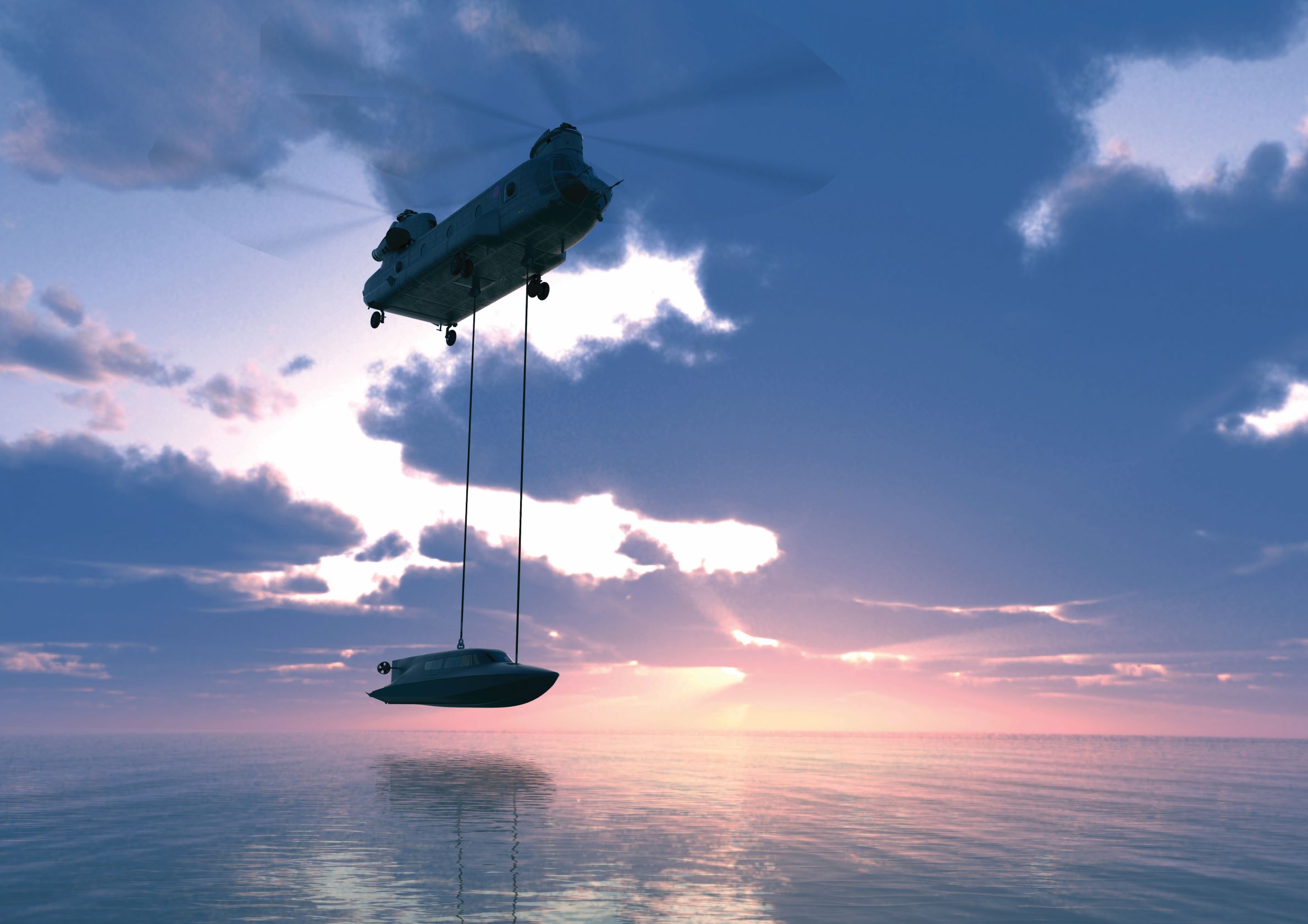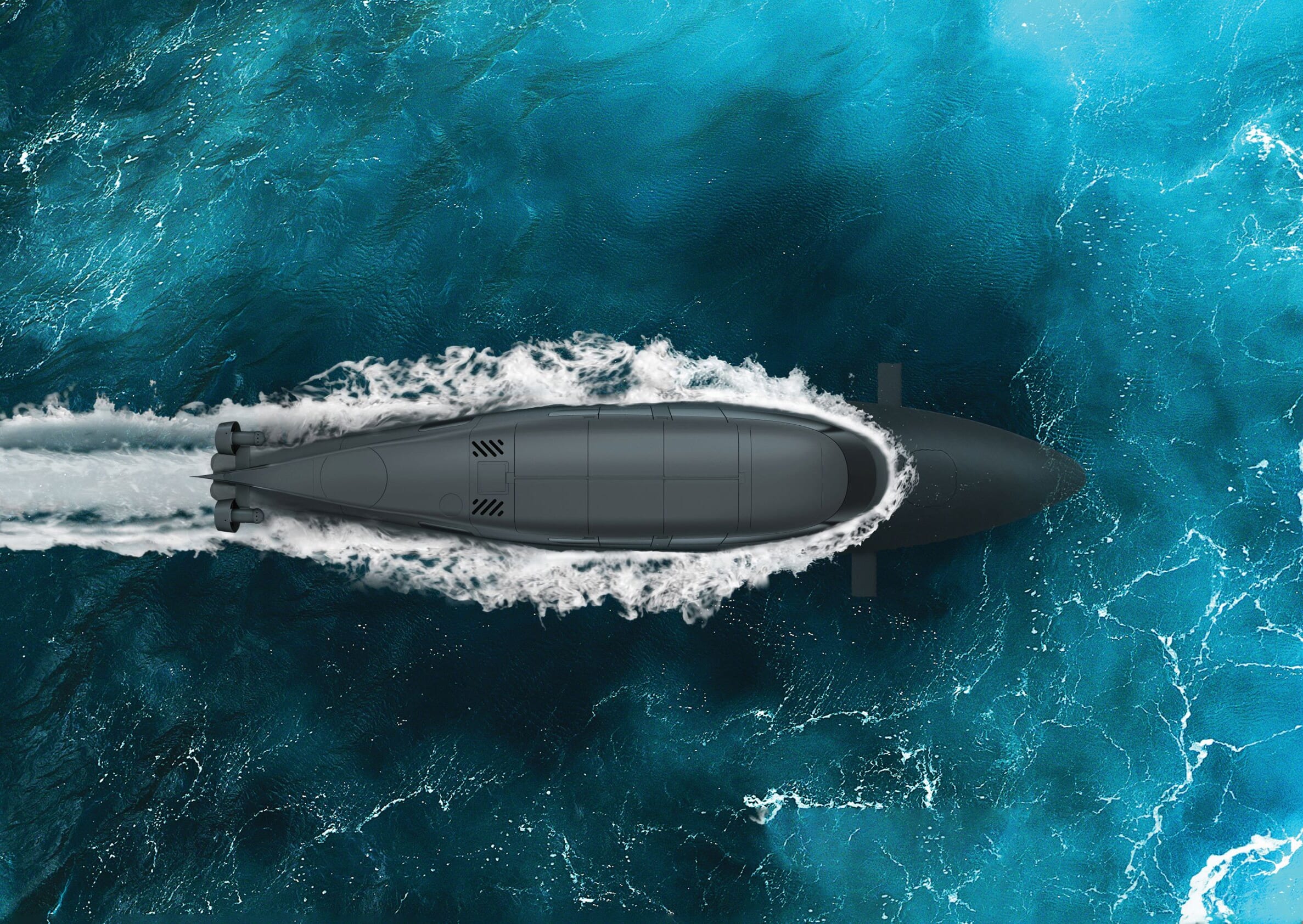SubSea Craft’s Victa Is a James Bond-Worthy Submersible Boat
This wild undersea vessel’s capability is perfectly matched to defense and security, where stealth and discretion are at a premium.

Any high-net-worth individual can buy a speedboat to cruise on tropical waters, that’s just pedestrian. So how do you truly make a statement—how does one set themselves apart from these commoners? Simply procure a vessel that can skim both on and under water.
That’s the unique selling point of SubSea Craft’s visionary hybrid watercraft, the Victa. Titled a Diver Delivery Unit (DDU), the Havant, England company’s carbon fiber vessel uses a modified 725 hp-plus Seatek diesel engine to slice over water at speeds up to 40 knots, offering all the high-velocity joys of a speedboat.
The categorical difference with the Victa being that if you want to submerge—you know, to dive across a coral reef, peruse an octopus’s garden, or maybe release divers for a secret mission to overtake Richard Branson’s supermodel-filled Necker Island—you can.
Using the six silent onboard electric thrusters, Victa can dive down to 100 feet and maneuver underwater at speeds up to eight knots, bringing all your James Bond fantasies to life.

“Although initially considered for the commercial market, it quickly became clear that Victa’s capability is perfectly matched to the defense and security sector where high-tech control and deployment flexibility are essential,” says Scott Verney, SubSea Craft’s CEO. “And where stealth and discretion are at a premium.”
He explains Victa’s principal role is delivering specialist divers into high-risk/high-threat environments, including surveillance and reconnaissance missions where landing discreetly into areas of conflict is prioritized.
It’s also well-suited to counter-narcotics and coastal defense ops, thanks to the vessel’s deployment flexibility: the 40-footer can be transported in a standard shipping container, lowered from the side of a ship, or even deployed via aircraft. And Verney notes that “there is also interest from the adventurous leisure sector who are keen to use Victa as a way of offering extreme diving experiences.”

How does it submerge, exactly? Similar to how an airplane’s pilot initiates the landing process, the Victa slows down and its pilot initiates a sequenced drill. Divers connect to the craft’s air system and Victa begins rapidly filling with water as it dives to an initial operating depth of about 20 feet. Once initial checks are made, the pilot can then navigate the craft at depths up to 100 feet to a destination point as far as 25 miles from submersion.
At its destination the craft will hover while divers switch from onboard air to individual supplies; the gullwing doors open and they can then exit to fulfill their mission. For surfacing the same process occurs in reverse, the only difference being that at a partially surfaced state, the diesel engine fires up to start forward momentum. This helps empty water from the craft; as it clears the pilot can throttle up to 40 knots for their return.

Verney ticks off the long list of world-class technology that such a unicorn demands: the highest-spec sonar and underwater navigation tech (provided by world-leading Sonardyne); internal communication systems that ensure the highest standards of diver safety; an integral air-breathing system that prolongs underwater endurance (up to four hours / 25 miles under water on organic air); and specially-designed Ullman seats for diver stability and comfort.
Available for wealthy adventure-seekers eager to add a special something to their list of megayacht toys, the price tag of around $9 million doesn’t include many luxury touches however. If you’re hoping for teak trim, 80-inch 8K screens and Viking appliances, good luck.
“The nature of the craft means that salmon canapés and champagne are not on offer whilst embarked,” Verney notes. “But anyone using Victa will most likely want her for her operational capability as opposed to optional extras. Someone driving a Formula One car would not expect a heated cupholder on the dashboard,” he continues. “Though if the client requires a cupholder, we will provide.
